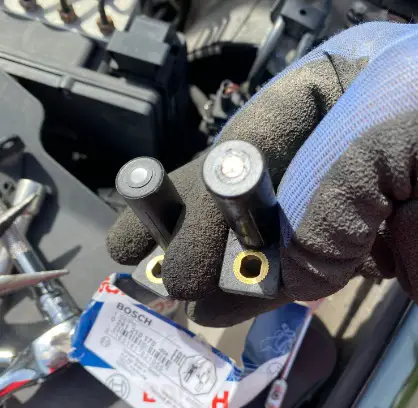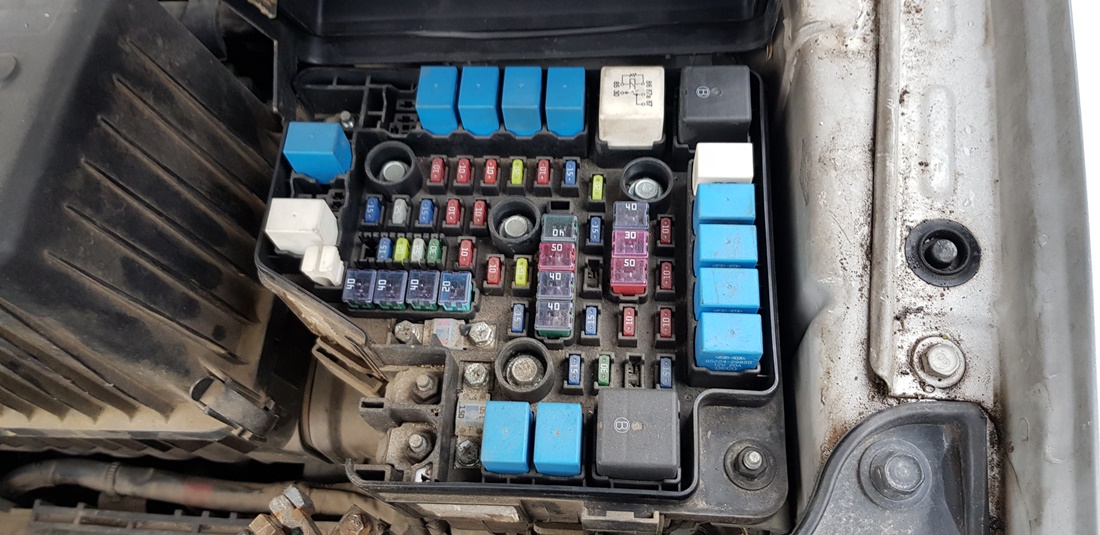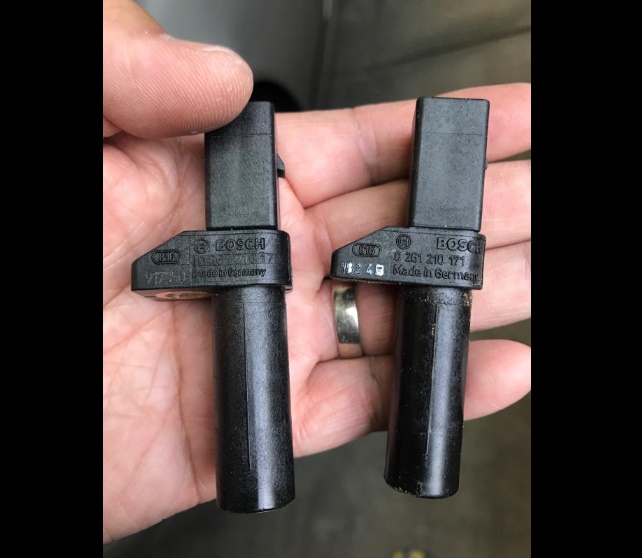If you are underneath your car and you see a lot of rust on your car frame, you should be worried. The first thing that comes to mind is: Is it safe to drive a car with a rusted frame?
Key Takeaway
- It is not safe to drive a car that has a rusted frame because rust is a special form of corrosion that slowly eats the car frame turning the strong metal into flaky powder, eventually damaging it to a level where its structural integrity is compromised.
- Rust can corrode the metal parts of a car, compromising its structural integrity and potentially making it unsafe to drive.
- One way to know if rust has compromised your car frame is by checking for visible signs such as holes, excessive oxidation, or even bends and dents.
Is It Safe To Drive a Car With a Rusted Frame

Driving a car with a rusted frame is not safe because rust is a form of corrosion that gradually deteriorates the frame of the car, compromising its structural integrity.
If your car frame has excessive rust on it to a point where holes start to appear on the frame, or some parts of the frame are missing, this means that the rusting has affected the structural integrity of the frame and it is no longer safe to drive your vehicle.
This could lead to potential hazards while driving, such as holes forming in the frame or even complete failure of the vehicle’s structure. In severe cases, a rusted frame can also fail safety inspections.
Not all cars rust the same way. This depends on where you live, what type of car you have, where you drive your car, is your car a full-frame vehicle or unibody, and how often you wash your car.
People that live in places where it snows a lot will have more rust on their vehicles. This is because we still use salt on snowy roads. The salt itself cannot initiate the rusting process, but it can speed it up if there is any, to begin with.
If you drive your car off-road and then you come home and you don’t wash it, this could be bad for the car because all kinds of debris could be stuck into the frame and keep moisture for a long period of time.
How Much Rust Is Too Much Under a Car?
A few small spots may not have any effect on the vehicle’s performance, but large amounts of surface rust or rust in places like suspension components, body panels, or underneath the car can cause problems.
Generally speaking, if there is too much rust to easily patch up with an automotive primer and paint job, it is best to have a professional check it out or replace affected parts.
Rust weakens metal structures and can lead to structural failure over time if left untreated.
What Rust Can Do To a Car
Rust can seriously compromise the safety of a vehicle. If left unchecked, rust can eat through suspension members, subframes, and unibodies, leading to structural damage.
When rust is in the surface stage, safety isn’t compromised, but as soon as it turns structural, your car becomes dangerous to drive.
Rust can also harm the engine by causing a range of engine running problems, including misfires and reduced efficiency.
Corrosion and deposits interfere with the combustion cycle, meaning that the engine can’t process air and fuel at its normal rate.
Additionally, rust can occur anywhere on the body of the car. It can weaken the exhaust system mounts and violate the trunk area, among others.
Therefore, it’s crucial to address any signs of rust as soon as possible to maintain the safety and longevity of your vehicle.
How To Know That The Rust Has Compromised The Car Frame
- Misalignment: If your car is not driving straight even after a wheel alignment service, it may be a sign of frame damage due to rust.
- Visible Rust: Look for visible rust on the car’s frame. Rust usually starts from a tiny crack in the frame and expands over time.
- Rust Probing: Use a screwdriver to probe the rusty area. If the screwdriver penetrates the frame or chips away a lot of rust, this could indicate severe rust damage.
- Damaged Body Structure: Any damage to the car’s body structure could be a sign of rust compromising the frame.
- Safety Compromises: A frame damaged by rust can potentially redirect impact, posing a threat to the vehicle’s occupants. It can also compromise the security of large components like the engine and transmission.
- Vehicle Performance: If you notice that your vehicle is not performing as it should, rust might have compromised the frame. This can manifest in reduced fuel efficiency, misfires, and other engine problems.
How To Inspect Your Frame For Rust
All vehicles have rust on their frame. Some have little, some have many. It all depends on where you live and where you drive your vehicle. As much as salt helps the snow to melt faster on the roads, it is the number one cause of frame rust.
Performing a rust inspection on the vehicle frame that can be used both on your own vehicle or if you are buying a used car. This inspection can be performed on full-frame vehicles and unibody vehicles even though they have enclosed structural components and subframes.
Some vehicle models are at more risk of failing frames and compared. Unfortunately, frame rust is an even bigger problem with enclosed structures.
This is because debris from a road can get trapped inside and keep moisture which will create rust over time. Here is how to inspect your frame for rust:
1. Perform a visual inspection
First, you would want to do a visual inspection of the exposed components. Going from the outside, we can do a visual inspection of the car frame.
Your vehicle frame would be dirty and the frame could have surface rust which is not that bad. We are looking for that major rust that affects the structural integrity of the frame. If any, try and remove the surface rust so you can inspect what’s underneath. I usually do this with a towel and oil.
2. Check The Fender Wells
Fender wells are part of a vehicle body that are exposed to more road debris which is basically sandblasting the paint from the frame. This is especially an issue on vehicles that have been driven on a gravel road.
3. Inspect The Rear Leaf Spring Brackets
The most common rusted areas are the areas that allow dirt to become trapped such as flat brackets or ones that created pockets like rear leaf spring brackets. This was a common problem on the Ford Rangers and Mazda B series trucks. On some vehicles, these brackets are replaceable and on some are welded to the frame.
4. Inspect The Inside Face Of The Frame
Moving on to the inside face of the frame. This is where you’ll have to climb underneath the vehicle. Inspect the frame for any rust. A common area can be next to the exhaust where the heat can melt any snow with a salt mixture, therefore accelerating the rust.
5. Open The Hood
Open the hood and check the front of the frame. Depending on the vehicle, you may be able to get a good view from that point of view. I would recommend having a good high-powered flashlight in order to get a good view.
6. Use a Hammer On Areas Which Are Rusted
If you are buying a vehicle, make sure to ask the owner if he is okay before starting. You can use a chipping hammer, a ball-peen hammer, or a regular hammer to hit any rusted areas and find soft spots. Again, you want to make sure that you are only hammering the rusted areas.
You should hear a consistent sound. If you hear different sounds while hitting different rusted areas, a hollow-like sound could indicate that the rust is not only affecting the surface but also the structural integrity of the frame.
7. Inspect The Inside of The Frame With a Borescope
I would recommend using a borescope to inspect the inside of the frame. The frame could be looking good on the outside, meaning the previous owner could have painted it, but once you look on the inside, it could be all rusted.
Frame replacement could cost you thousands of dollars. I am not sure that you will find a welder to weld up your frame because it can affect the structural integrity of the frame. Also, welded frames perform really badly in car accidents.
How To Clean Rust on Vehicle Frame

Unfortunately, vehicle frames tend to rust over time. From time to time, you should check your frame for rust because it is more than just an aesthetic look. You can clean rust on your frame only if it’s surface rust. If the rust is so bad that parts of your frame are missing, you should take your vehicle to the repair shop and fix it there.
Here is how to clean up a rusty frame on a budget.
1. Wash your vehicle
First, go ahead and wash your vehicle. You need the frame to be free of debris and dirt so you can really see which parts are rusted. It’s best if you wash your car at home and let it dry. You can also spray some degreaser to help you remove any oil that could be on the frame.
2. Identify the rusty areas
Get underneath the vehicle and inspect the frame for rust. Check every part of the frame with a flashlight and try not to miss any part. Once you find the rusty parts, mark them with tape so it’s easy for you to find them later on.
Again, you can only clean the surface rust. If your frame is so rusty that parts are falling off, you should take your vehicle to the mechanic shop. Hit the rusty areas with a ball-peen hammer to see the condition of the rust.
3. Remove any parts that are in the way
If some of the parts are in your way of getting to the rust, remove them. If the rust is near some electronics or around the engine, mask out the area with tape and paper to prevent any overspray. Also, make sure that the engine is cold.
4. Grind off the rust
You can either do this manually or with a heavy-duty air-powered surface sander( ). Personally, this is too much work to do with sandpaper so I use power tools. Start with 80 – 120 grit and then do the second hand with 220 grit. If needed, use 320 as a finishing touch. You should stop once the bare metal is exposed.
). Personally, this is too much work to do with sandpaper so I use power tools. Start with 80 – 120 grit and then do the second hand with 220 grit. If needed, use 320 as a finishing touch. You should stop once the bare metal is exposed.
5. Wipe the working area
Give the working area a good wipe-down with a wax and grease remover. You can use any towel as long as it is clean. This will remove any contaminants such as dust or grease left behind.
6. Spray with rust converter
Spray the rust converter( ) directly on the rusted parts so it will remove any rust left and your new finish will have a longer life. When using a product such as this, always read the instructions so you know exactly what the product requires. Some rust converters are a liquid that can be applied and washed off.
) directly on the rusted parts so it will remove any rust left and your new finish will have a longer life. When using a product such as this, always read the instructions so you know exactly what the product requires. Some rust converters are a liquid that can be applied and washed off.
7. Paint the frame
After a couple of hours of drying the rust converter, the frame can be finished with paint. For paint, I always use farm equipment to implement paint ( ). If you have a leftover, you can use this paint on utility trailers, fuel tanks, mower decks, and other yard equipment.
). If you have a leftover, you can use this paint on utility trailers, fuel tanks, mower decks, and other yard equipment.
Make sure the paint is dry before applying another hand. I usually leave the car couple of days so the paint can really dry before driving it.
8. Re-install any parts that you removed
If you removed any parts during this process, reinstall them and you are good to go.
FAQs
How long do rusted frames last on a car?
The longevity of a rusted car frame depends largely on the environment and the extent of the rust. If it’s merely surface rust, it can be easily repaired and the car could still be used for years. However, if the rust has caused substantial damage to the frame, the car may need to be scrapped.
How much will it cost me to repair a rusted frame on a car?
For small spot repairs, the cost can start as low as $100. However, for more serious rust damage, the expenses can range from $2,000 to $3,000, and sometimes even more. These costs are primarily driven by labor, as repairing a rusted frame can be incredibly time-consuming.
Does car insurance cover rust on a frame?
Car insurance does not typically cover rust damage to a vehicle. Rust is usually considered normal wear and tear of the vehicle, which is not covered by most auto insurance policies. Even if the frame of your car is rusted and breaks while driving, your insurance will likely not cover the damages.
When it’s time to worry about rust on a frame?
It’s time to worry about rust on a frame when it progresses from being just surface rust to becoming structural rust. Surface rust is usually not a cause for alarm as it can be treated and painted over.
However, if the rust has penetrated deep into the metal causing holes or weakening the structure of the frame, that’s when it becomes a concern. This type of rust compromise can affect the safety and integrity of the car, making it potentially dangerous to drive.
Should you buy a car with a rusted frame?
While it’s not absolutely impossible to restore a car with a rusted frame, it’s generally not recommended to buy such a vehicle.
A rusted frame can significantly compromise the structural integrity of the car, making it potentially unsafe to drive.
The cost of repairs for a rusted frame can be high, often outweighing the value of the car itself. Additionally, rust tends to spread if not thoroughly removed, so even after repair, there’s a risk of the problem recurring.
In Conclusion
Driving a car with a rusted frame is generally considered unsafe. The integrity of the frame, which is crucial for the vehicle’s safety, is compromised when rust corrodes the metal.
This corrosion can lead to significant damage over time, making the vehicle unsafe to drive.
While minor surface rust might not be immediately dangerous, any severe rust should be inspected by a professional mechanic right away.





Leave a Reply